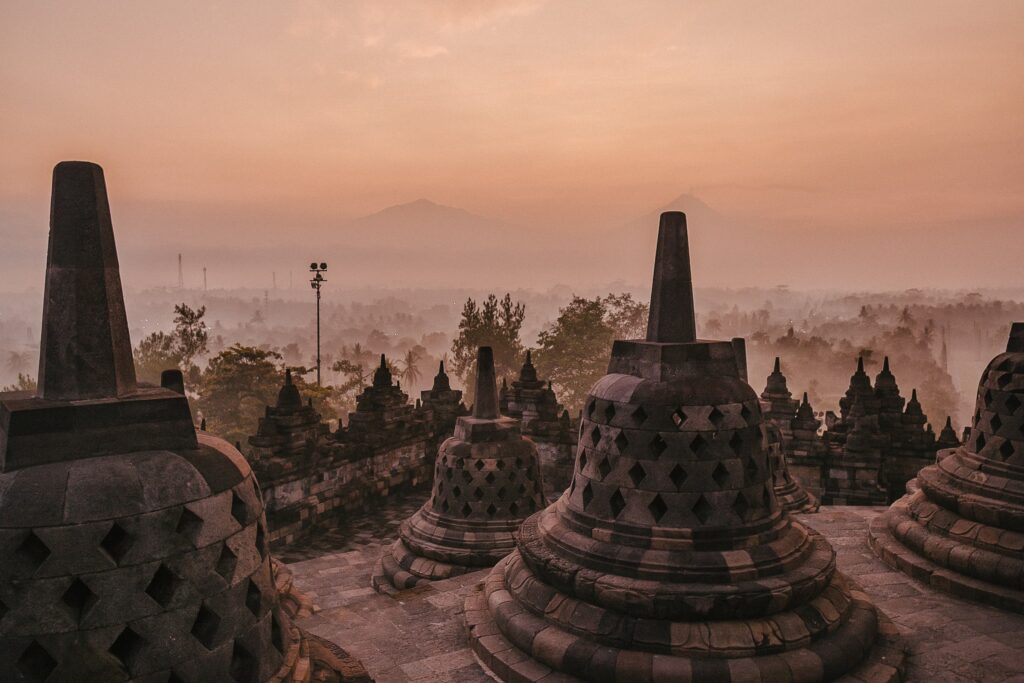Health Insurance in Indonesia
Moving to Indonesia
Indonesia is one of the most vibrant and exciting destinations in the world. The largest archipelago on the planet, it spans over 300 ethnic groups and an estimated 18,000 individual islands (only a handful of which even have names).
If that weren’t enough Indonesia has also been colonized at one time or another by the Dutch, Portuguese, French and the British. All these disparate influences have impacted every aspect of Indonesian life, creating a seemingly endless array of cuisines, cultures and lifestyles.
It is little wonder then that the national motto has become “Unity in Diversity”.
These days Indonesia spans everything from ultra-modern cities with all the latest technological advances one might expect from Hong Kong to some of the most pristine natural habitats in the world.
On the other hand, with such a large landmass, essential infrastructure may not always be what you’re used to. In more rural areas modes of transportation, healthcare facilities and even the prevalence of the English language can be severely limited.
However, you cut it though Indonesia an incredibly exciting country, just brimming with surprises and new experiences. Prepare to be amazed…
Indonesia Weather
Indonesia sprawls languidly across the equator, meaning that most islands experience a warm tropical environment. Humidity is typically high, though is less oppressive at higher elevations.
Temperatures average 25-30’C throughout the year; seasons are marked more by differing levels of rainfall than temperature differentials. The dry season – when sightseeing is easiest – runs from April to October. The winter months see considerably more precipitation, to the point of severe flooding on some occasions.
Indonesia is located at the edge of the well-known “Ring of Fire” meaning that earthquakes are not unheard of. The country boasts over 150 active volcanoes, many of which have become popular tourist sites in their own right.
Taking into account the geographic footprint that Indonesia covers, and the wide range of elevations created by tectonic activity, it is little wonder that Indonesia is one of the most biodiverse areas on the planet.
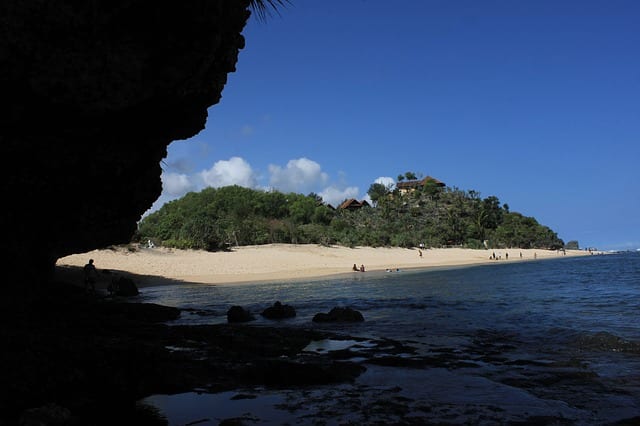
To give some example of the scale of wildlife that can be encountered here Indonesia is claimed to have the highest marine biodiversity anywhere on the planet, boasting 20% of the world’s coral reefs within its borders.
Furthermore, the country’s many small islands – cut off from large mainland areas – have allowed a vast range of unique animals to evolve over millennia. These days almost 40% of all the mammals here are to be found nowhere else in the world. And that before we mention the Komodo dragon – the largest lizard in the world reaching up almost three metres in length.
In other words, visitors to Indonesia will experience an almost limitless range of plants and animals, not to mention all the many unique cultures that have grown up amongst its thousands of islands. Indonesia, therefore, represents a kaleidoscope of life to sample, understand and revel in.
Indonesia Culture
Pinning down the Indonesian culture is problematic to say the least; after all with so many ethnic groups present here drawing conclusions can be difficult (and risky).
While virtually every major religion is represented on one island or another, possibly the most over-riding feature of Indonesian culture is the prevalence of Islam. These days Muslims make up roughly 87% of the population, which obviously has knock-on effects for the overall culture.
For one thing, most Indonesians are incredibly polite and welcoming towards foreigners. Great effort is given to showing respect for others, and you should expect to reflect this understanding and easy-going attitude.
Indonesia Culture

This is also a culture where the concept of “face” is considered central. Indonesians will often go to great lengths to prevent you from “losing face”. Equally, it is considered quite inappropriate to lose one’s temper; instead, it is more polite to try and explain away the unfortunate situation to save any embarrassment.
Beyond these sweeping statements, one will find unique peculiarities between the many different islands. On Bali, for example, Balinese New Year is not celebrated in the age-old manner seen around the globe. There are no fireworks or heavily-inebriated locals. Instead, Indonesians in Bali are expected to mark the occasion in a rather more unusual manner – with a day of island-wide silence.
The key here is simply to approach the local culture with the level of respect and politeness to which you would no doubt hope to receive. Beyond this, simply enjoy all the many cultural differences; people-watching can be one of the most rewarding aspects of visiting Indonesia.
Indonesia Language
The official language is Indonesian, though in reality for many people this is a second language. The reason is simple; many ethnic groups represented in Indonesia have their own native language which is used with family and friends, while Indonesian is more likely to be used in official situations such as during business meetings or when interacting with government officials.
It should come as no surprise with the ethnic diversity here that a huge range of other languages may also be encountered. Chinese immigrants are notable in that many have established successful businesses in Indonesia and now make up a wealthy caste that holds sway in matters of national importance. As a result, a number of Chinese dialects – not to mention cuisines – are commonly encountered.
For travellers and expats alike English is reasonably commonly spoken, particularly among younger age groups and more tourist-heavy areas like Bali and Java. These two islands also boast “tourist police” helplines, where English is spoken.
Indonesia Public Transport
Visiting such a large island chain can represent obvious logistical problems. Indeed if you are to make the most of your time in Indonesia you will likely need to become familiar with the huge range of transportation options on offer.
On a national scale, there are a number of ways to travel between islands. To begin with, there is a wide range of airlines servicing internal flights. These range from professionally-run outfits adhering to international standards of safety to tin-pot operations run with tired old planes that may not have been properly serviced in many a year. These smaller “airlines” are more likely to be experienced more outlying islands.
Where possible experts advise restricting your flying to either Air Asia or Garuda, both of which offer modern planes and reliable flight times. Internal flights are comparatively cheap by global standards so even travellers on a tight budget should be able to explore far and wide without too much of a dent in their budget.
The alternative solution for island-hopping is to use one of the many ocean-going vessels. Once again these range from modern ferries to tiny privately-owned boats that leave when they have filled (or over-filled) the seats available. Travellers are advised to make their own safety checks, and to only board vessels that they believe to be properly maintained and captained.
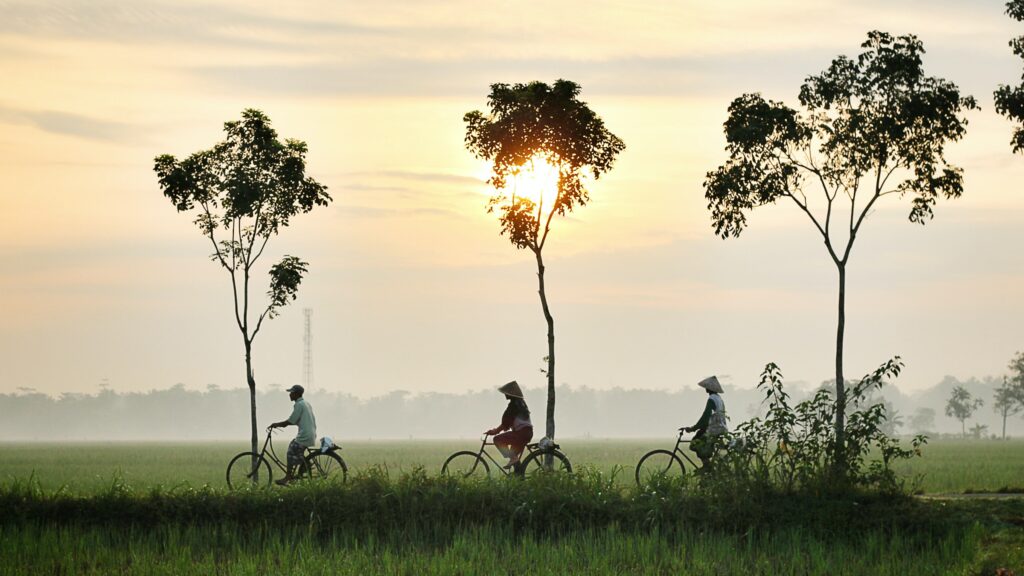
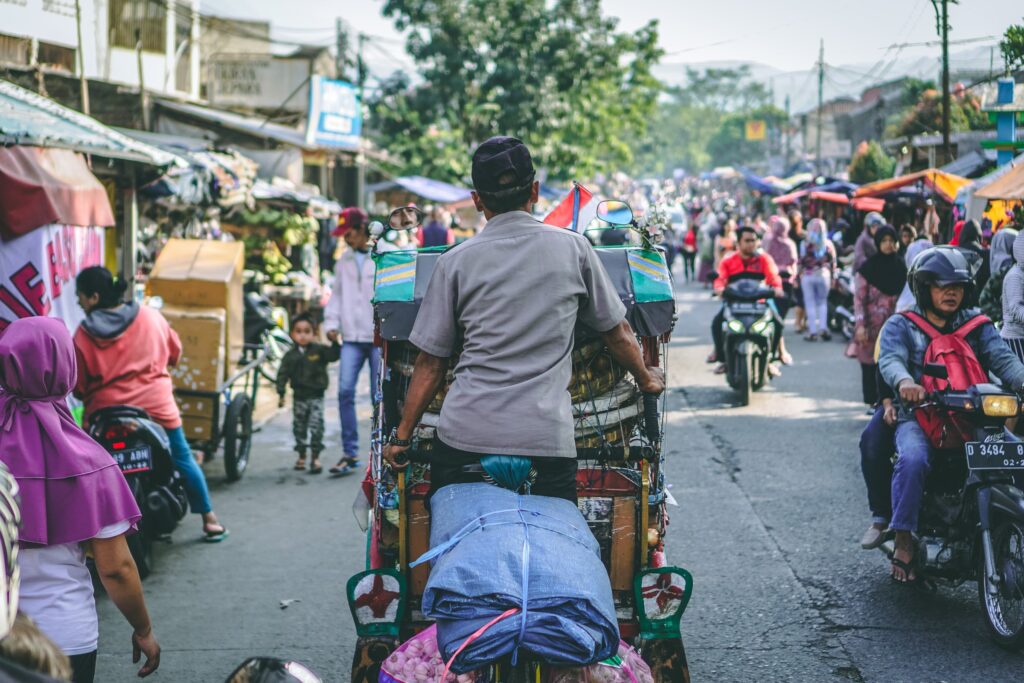
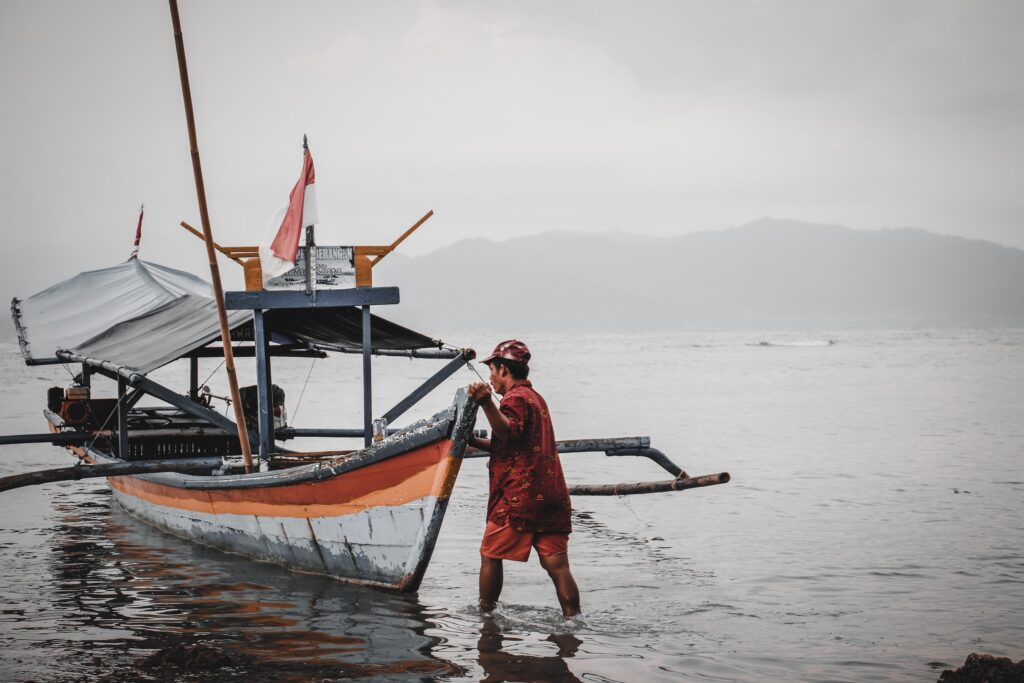
Once you have your feet on dry land there is a range of options available to you, though, of course, these will be far easier to come by on the larger and more developed islands.
Firstly cars can be rented cheaply, though road signs and traffic lights are frequently ignored by drivers with gay abandon. As a result, drivers can be unpredictable and accidents are commonplace. This is especially so after dark when animals both domestic and wild may venture onto the roads.
Indeed, reports exist of some employers in Indonesia refusing to let expatriate staff from driving such are the regularity of accidents.
It is generally considered safer to hire a dedicated driver who will have a better understanding of the “rules” by which Indonesians drive. In addition, the difference in price between hiring a car to drive yourself, and one with a driver, is typically minimal – representing a small price to pay for your safety and sanity.
Note that if you opt to drive yourself an International Driving Permit will be required; many national driving licenses (such as those issued in the UK) are not valid in Indonesia.
Alternative forms of road transportation come in many different forms. For the brave (or suicidal), for example, one can hire a motorcycle taxi (“ojek”), riding pillion through the throbbing streets of downtown Jakarta.
Rather more sophisticated alternatives may be found in the form of horse-drawn traps (“dokars”) or one of the many tricycle rickshaws (“becaks”).
Rather more conventional forms of public transport exist of course. Buses are cheap and come in a plethora of forms. The lowest-cost public buses tend to be slow and overcrowded. Rather more popular among expats and visitors are the so-called “executive buses” which, whilst rather more expensive, offer far more home comforts such as air conditioning.
For greatest comfort the tourist shuttle buses should be considered. Not only do they offer high levels of comfort (and leg room) but they will pick you up and drop you off at your desired locations. As a result there is no need to try and decipher the local bus maps, or find your way to your desired tourist site from the nearest dropping-off point. Instead you will dropped off at the door, ready to begin your sightseeing tour.
Indonesia also boasts a number of passenger rail services. The benefit of these trains is that the views are often spectacular – meaning that travelling through the greenery with views of mountains and volcanoes in the distance can be an experience in themselves.
Whatever public transport option you select, note that lower-priced options often suffer from high levels of crime. Should you opt to travel by commuter bus, or in one of the cheaper seats on a train, try to keep your wits about you. Bags should be kept close to your person and watched at all times, lest someone else “accidentally” disembarks with your belongings. These problems are far less common on more expensive public transport.
Indonesia Healthcare
No tourist destination is ever perfect. Indonesia may offer a seemingly endless array of experiences and adventures to traveller but it is severely lacking in terms of the healthcare services on offer.
Within major urban hubs like Jakarta you will find decent-quality hospitals, however, in more rural areas it can be difficult to locate even basic facilities. It is worth noting that some prescription medications can also be difficult to find in Indonesia.
In addition, there is presently no national ambulance service, with a number of local services being run by individual hospitals. It is therefore advisable on arrival to find a hospital you are happy with and to register for their emergency care services should they be required.
While there are weaknesses in the system, the Indonesian government is working hard to improve the standards of care. A national health insurance system has been introduced recently, with the aim of providing a universal healthcare system for Indonesians. Investment in healthcare infrastructure is ongoing but many visitors will find their local clinic or hospital well below international standards.
Expats and even wealthy Indonesians typically rely on a number of solutions to the problems inherent in the Indonesian healthcare system. Firstly, try to bring sufficient prescription medications with you when visiting, which can avert the problem of trying to source such items in Indonesia.
Secondly, if you can afford it, better levels of healthcare are typically experienced in private hospitals in major cities. Private hospitals currently account for roughly two thirds of the establishments in operation. Government-run hospitals are typically staffed by non-English speaking doctors, waiting lists can be long and facilities quite basic.
The third option, which is becoming increasingly popular, is travel to another country. It is not unusual, for example, for wealthy Indonesian residents to travel to Singapore for treatment – a country with a world-class healthcare system.
In summary, visitors to Indonesia should consider international medical insurance an absolute necessity. The difficulties – and expense – of finding suitable treatment in Indonesia means that travelling without suitable protection should be considered extremely risky.
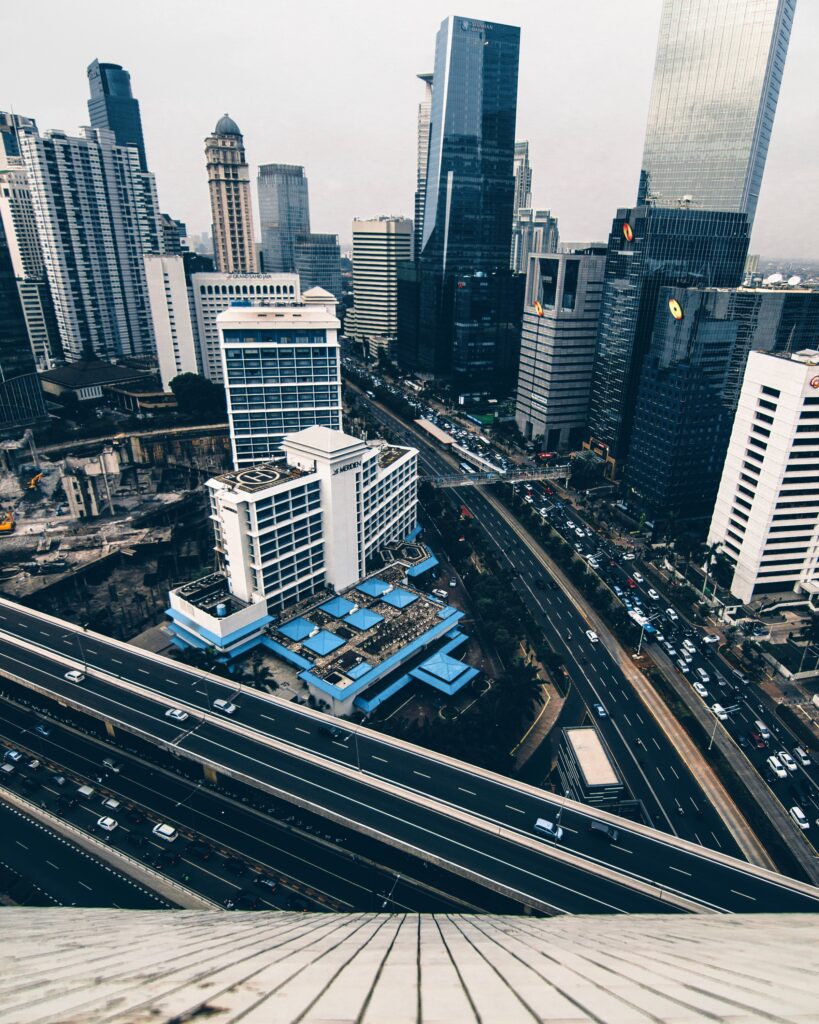
Indonesia Currency
The official currency in Indonesia is the Rupiah. Very few alternative currencies are accepted, though some hotels in tourist areas may accept US Dollars.
The local currency is considered quite weak and has suffered from considerable inflation over the years. As a result, if there is one country guaranteed to make visitors feel wealthy it is Indonesia. Even changing a small amount of currency into Rupiahs will weigh down your pocket like nothing else.
Such situations can also cause problems; the number of notes handed back to you at currency exchange offices can often be overwhelming and it is easy to be short-changed with such a volume of money. While currency exchange offices may be found in many urban areas it is normally safest to stick to the most reputable sources – such as local banks.
Note that Indonesia suffers heavily from forged notes, which can represent problems for visitors. While US dollars are reasonably easy to change, be aware that tellers can be very fussy about the notes they are willing to accept. For best results aim to bring immaculate new notes. Those dated pre-2006, or which show any kind of damage, are likely to be declined.
An alternative to bringing in US dollars to exchange is to make use of the many ATMs to be found in more developed areas. Note that many of these machines will only provide minimal currency in each transaction. For individuals wishing to withdraw larger sums of money, it may be necessary to carry out repeated transactions.
Credit cards may be accepted in urban areas, but even then credit card fraud is rife. Warn your bank that you will be visiting Indonesia, and do not let the card out of your site.
In general, Indonesia is still a largely cash-carrying society. It is wise to carry a decent volume of the local currency, particularly if venturing outside of the main tourist hubs.
International Schools in Indonesia
After the weaknesses of the health system, it is refreshing to discover that educational standards in Indonesia are considerably better.
While local state schools are unlikely to provide the experience you seek for your children due, at least in part, to the complexities of lessons taught in Indonesian, there are a large number of highly-regarded international schools in and around Jakarta.
There are numerous expats living and working in the capital and so your children are likely to quickly make plenty of new friends living a similar expatriate lifestyle. Lessons are typically taught in English and many teachers themselves are expats within these schools.
A second alternative for education in Indonesia is the so-called “National Plus” schools. As the name would suggest these schools aim to cover considerably more than the government-assigned curriculum. Many offer English-speaking teachers with lessons taught variously in English or Indonesian. They can therefore represent a good opportunity for long-term expat children to further their education while still picking up the local tongue.
While “Indonesian cuisine” may not be as ubiquitous around the world as Indian, Chinese or Italian food you might be surprised to hear that a number of Indonesian dishes have gained global approbation. Just two such examples which have successfully crossed the planet are Nasi Goreng and Satay.
As one might imagine in this part of the world the typical menu consists of the classic Asian combination of rice, meat and vegetables with an assortment of flavour-enhancing spices. Peanut-based meals are also something of a national institution; prepare to be astonished at just how versatile this seemingly simple ingredient can be in Indonesian cooking.
That said, the diversity of cultures thriving on Indonesia’s thousands of islands had led to the evolution of literally hundreds of unique taste experiences. For this reason alone Indonesia should be considered something of a food-lovers paradise. One could try something new at every meal and still never have long enough to experience all the possible options.
This diversity means that pointing to “typical” dishes can be problematic, and will vary by your location. However, there are a number of recipes encountered all across the archipelago. Bakso, for example, comprises meatballs served in a thick broth with noodles or rice. For vegetarians, Gado-Gado represents a vegetable salad dressed with a rich peanut sauce.
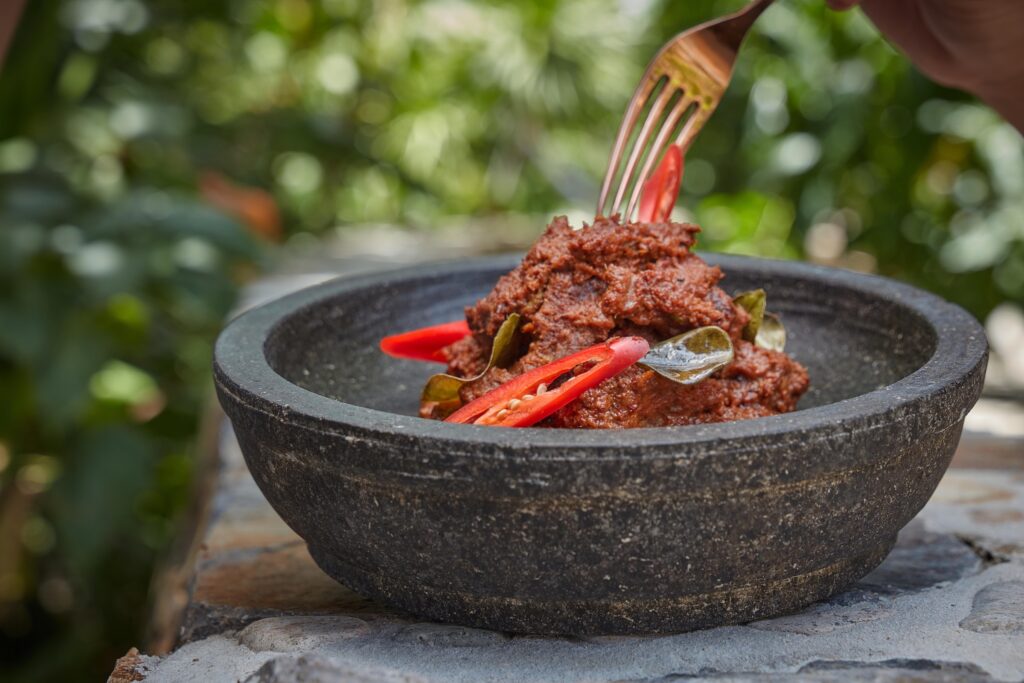
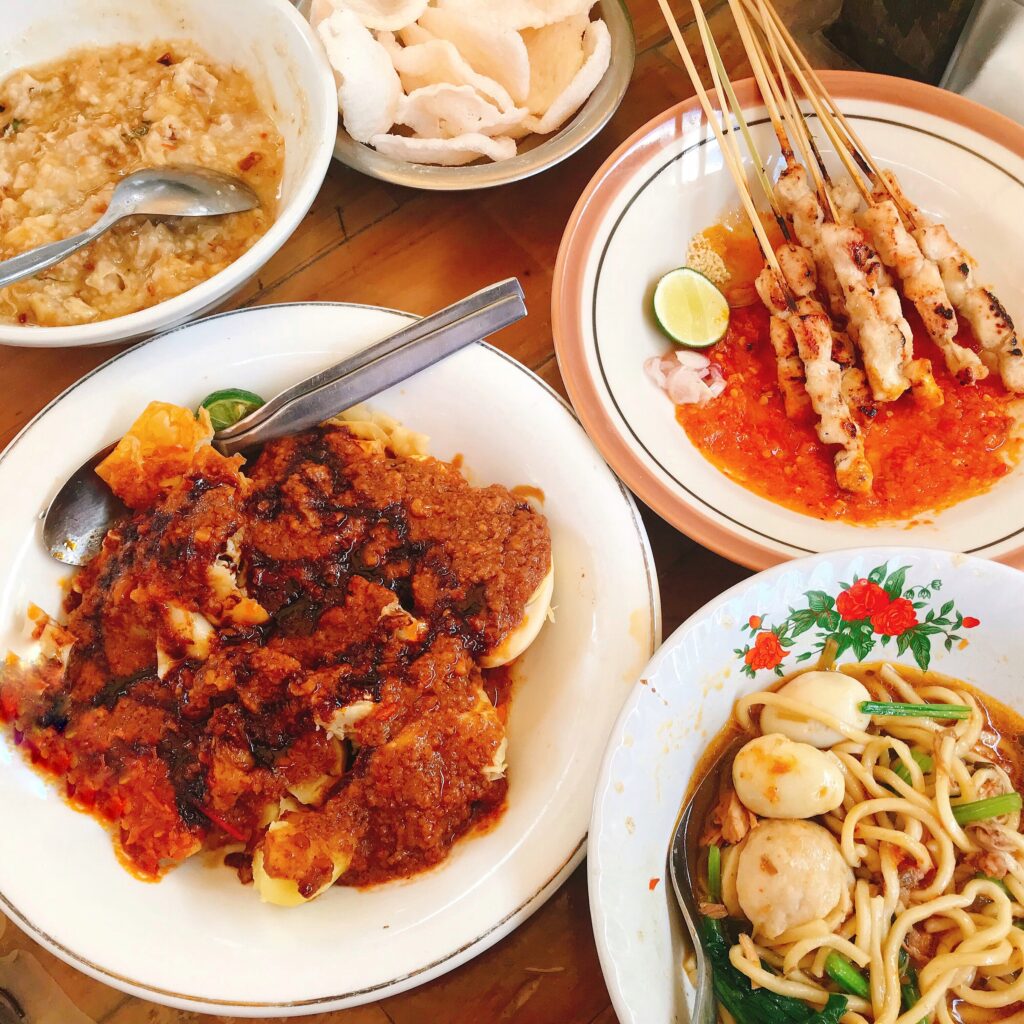
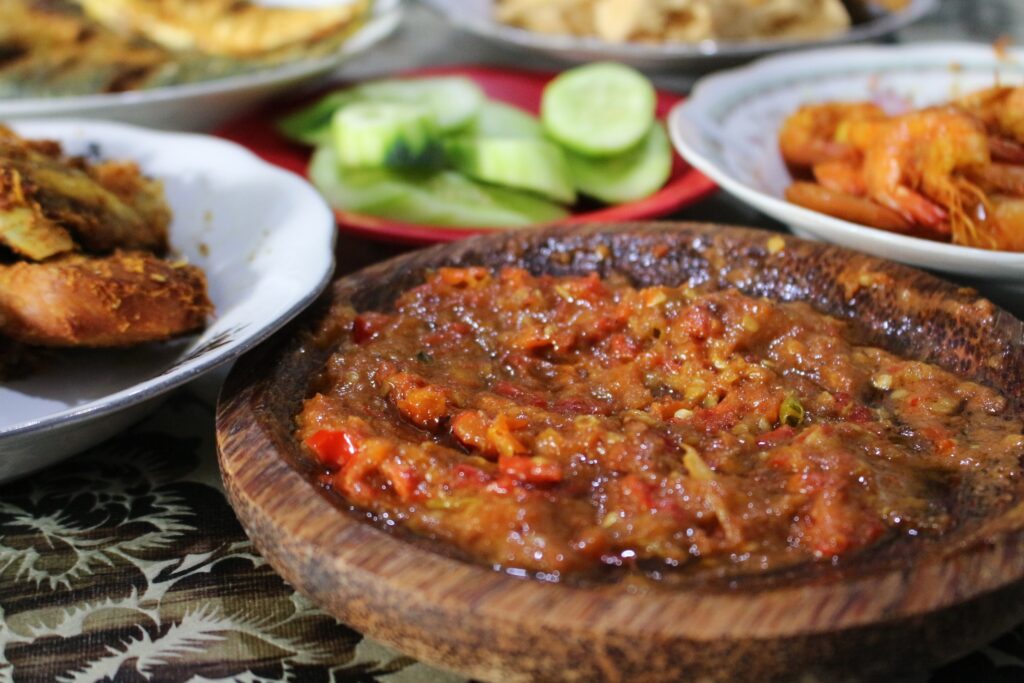
Culturally, Indonesians typically do not eat dessert as one might in the West. That said, there are still plenty of options to curb your sugar craving. Known as “Kue” the Indonesian equivalent is a broad range of sweet pastries and cakes.
One omnipresent addition to meals throughout Indonesia is “Sambal” – a thick sauce made from chillies, shrimp paste and lime juice. Visitors who dislike spicy food would be well advised to check whether any meal includes this widely-used sauce.
In the time of Dutch occupation, Indonesia was essentially seen as one giant tea and coffee plantation. While independence was announced in 1945, Indonesians maintain a love of both beverages. Coffee (“Kopi”) and tea (“The”) are generally served characteristically sweet in Indonesia.
For a uniquely-Indonesian taste sensation, consider ordering a “Bajigur”; warm coconut milk infused with a dizzying array of local spices.
Oddly, for a primarily Muslim nation, alcohol is readily accessible across the country and is enjoyed by visitors and locals alike. The de facto drink of choice is a Bintang beer. It is worth noting that while alcohol may be enjoyed in Indonesia, public displays of inebriation are severely frowned upon.
Hygiene can be something of a concern in Indonesia. Tap water is generally not considered safe to drink. Indeed according to recent statistics, almost a third of childhood deaths are as a result of tainted drinking water. For this reason, it is wise to rely on bottled water (checking the seal hasn’t been broken) and to avoid ice in drinks where possible.
It has been said that no matter what the danger, it can be found in Indonesia.
Infectious diseases are prevalent. Outbreaks of polio and anthrax still occur in Indonesia, as does bird flu. Malaria is also a problem in some areas. It is critical therefore to seek qualified medical advice before you visit to ensure you are properly vaccinated against the risks.
Indonesia also experiences its fair share of rabies so physical contact should be avoided with domestic and wild animals. Domestic dogs are common carriers so take precautions to avoid bites.
Aside from infectious diseases, a number of natural disasters can occur in Indonesia. Earthquakes and volcanic eruptions are not unheard of, while severe localized flooding can occur after heavy rain. Visitors are advised to keep a close eye on local media as well as their government’s international travel guidance in order to avoid potential problems.
Arguably the worst of these natural disasters experienced in recent years has been the growing problem of epic forest fires. These are frequently started by palm oil farmers in order to clear brush and expand their growing space. However, these fires can ravage forest areas, especially in the dry season. It’s not just the fire that can cause problems; the smoke itself can drift far and wide. It has been known for smog from Indonesian forest fires to travel as far as Thailand. Once again, pay attention to warnings and avoid affected areas.
Lastly, note that there is a mandatory death penalty for those caught with even small amounts of drugs. Ensure that you pack all your own bags and refuse to carry anything for other people, no matter how “innocent” your companions appear.
Places to Visit in Indonesia
With over 18,000 islands in one of the most biodiverse regions of the world, it is little wonder that there are so many areas of the country worth exploring. In reality, one could spend a worthy lifetime simply getting to know all the many islands here.
Drawing conclusions about the “must-see” sights, therefore, becomes a Herculean task. That said, after considerable deliberation here are some of our favourites:
Komodo Island
Established as a national park in 1980, and now classed as a UNESCO World Heritage Site, Komodo is home to the eponymous giant lizard to be found nowhere else on earth. For a close-up view visit one of the many feeding stations where one can safely watch these incredible prehistoric creatures at close quarters. However it’s not just lizards to be found on Komodo – the whole area represents a refuge for wildlife, much of it unique to Indonesia.
Komodo Island
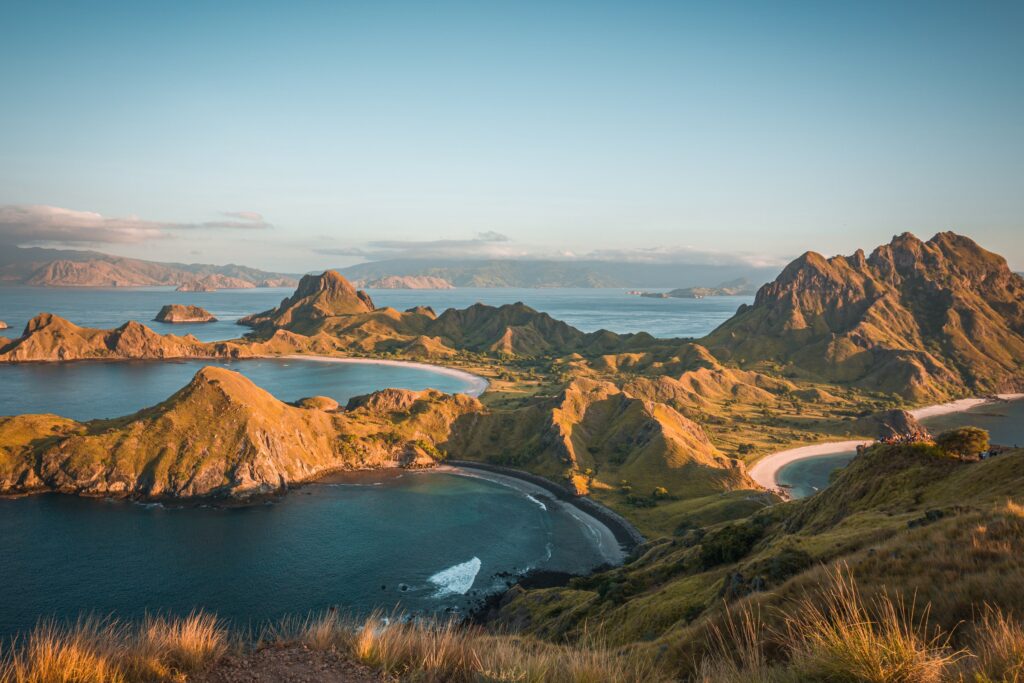
Gili Islands
Three tropical islands make up the Gilis. Each perfectly replicates the classic picture-postcard tropical island; stunning white coral sands and gently swaying palm trees surrounded by warm, clear blue water.
The islands maintain a laid-back “backpacker” vibe – and are perfect for relaxing, exploring and swimming. However where the Gili Islands really come into their own are as a diving site. Whether you’re an experienced snorkeler or are looking to head beneath the water for the first time you will find a wealth of dive schools on hand and some of the most diverse marine life in the world.
Gili Islands
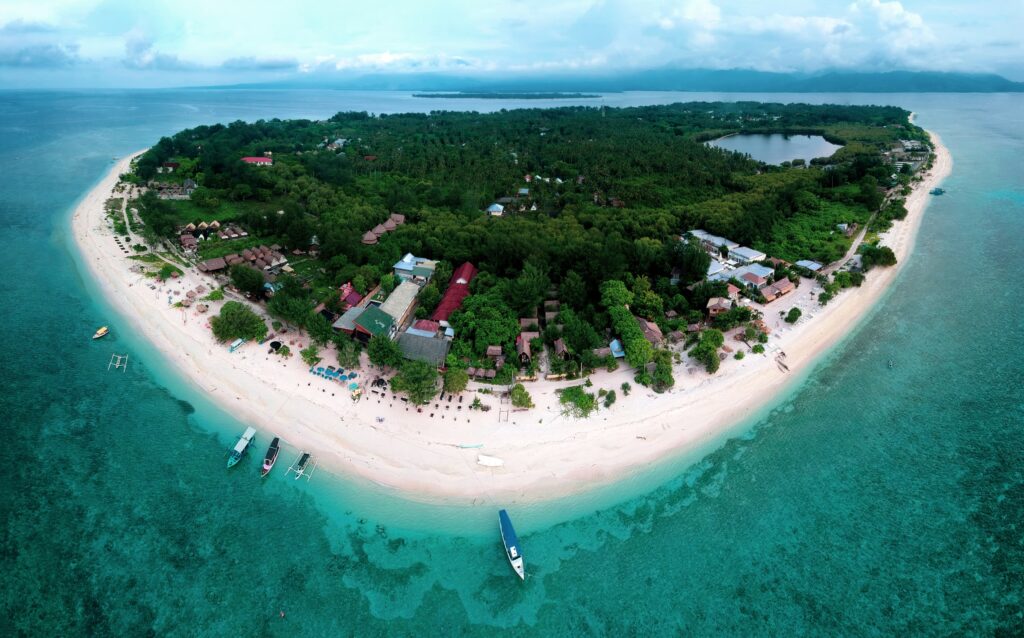
Ubud
Regarded by many as the cultural hub of Indonesia, this Balinese town offers a glimpse into traditional life in Indonesia. It perhaps even best known for the temple to be found here. The temple is situated within an area known as the “monkey forest” – where several hundred semi-tame macaques can be experienced at close quarters.
Ubud
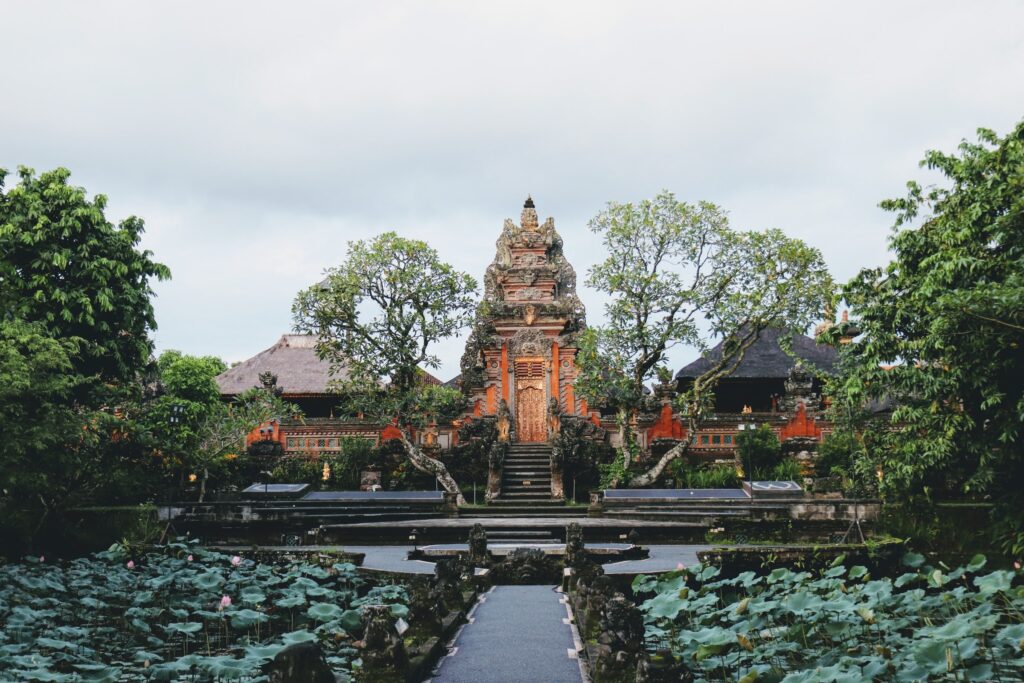
Ujung Kulon National Park
Located on Java Island, Ujung Kulon represents one of the largest remaining lowland forest areas in Indonesia. For wildlife fanatics there can be few more tempting destinations. A number of rare creatures may be encountered by the patient, including leopards and the Java mouse deer. It is also considered the very last place on earth where the critically-endangered Javan rhinoceros holds on in perilously small populations.
Ujung Kulon National Park

Borobudur
Possibly Indonesia’s best-known tourist destination, UNESCO-listed Borobudur is considered the largest Buddhist temple in the world. Dating from the 9th century to spectacular dimensions (118 metres in diameter) the site perfectly combines architecture, history and religion into a truly memorable experience. The temple is clothed in over 2000 intricately-sculpted relief panels and boasts 504 different statues of the Buddha.
Borobudur
